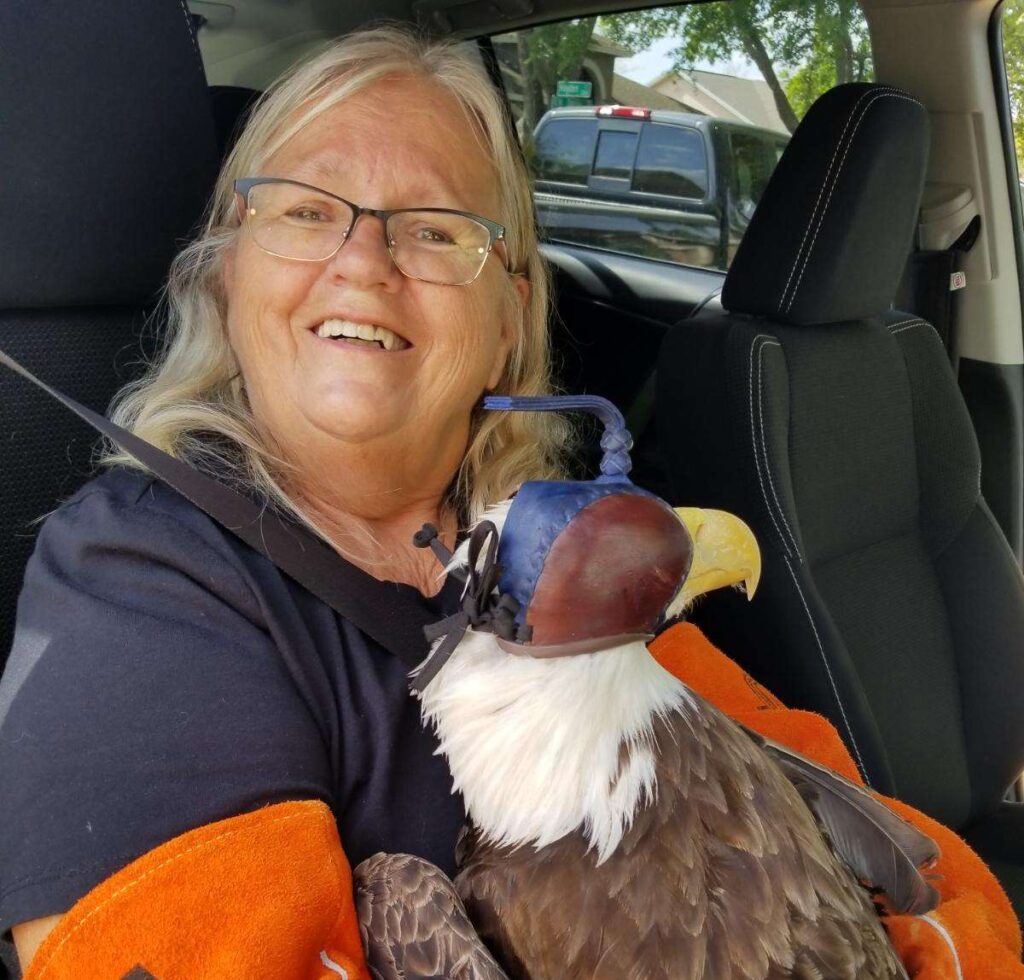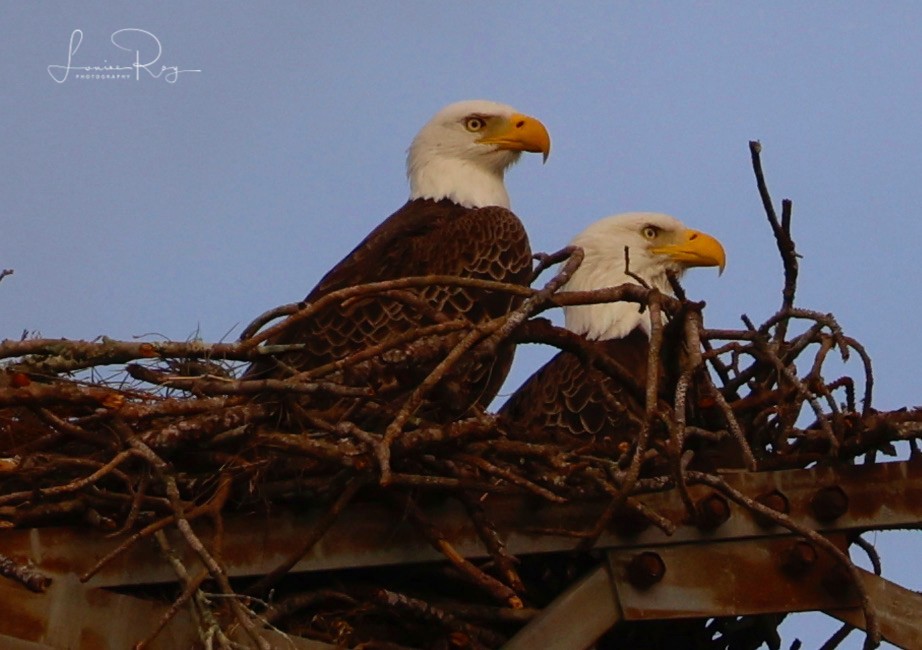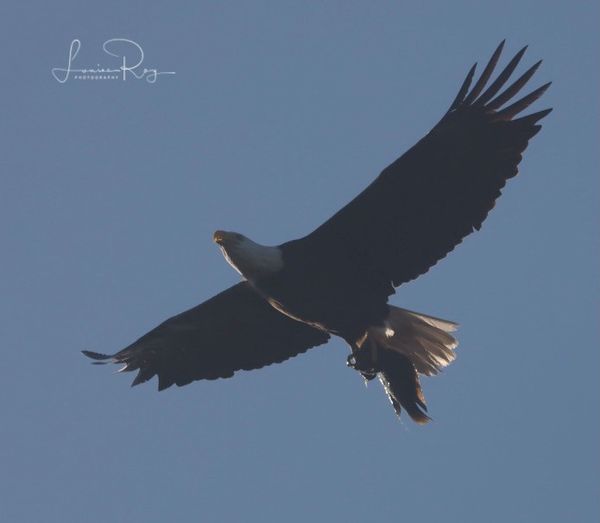It all started when Louise Roy saw the bald eagles nesting at Honeymoon Island nearly 10 years ago.
Today, the 74-year-old great-grandmother of seven has rescued hundreds of raptors, serves as Audubon’s EagleWatch coordinator for Pinellas County, and monitors 10 nests of her own, including her favorite where Major and Margie are raising their family atop a cell phone tower.
“I’m always so elated to see those baby bobbleheads when they hatch,” Roy says. “I just love being there to watch.”

Watching her eagles, however, isn’t always a happy occasion. Major’s first mate was an eagle named Celeste who had been his partner for many years. Two weeks after her last eggs were laid in 2015, she died in the arms of Nancy Murrah at the Raptor Center of Tampa Bay.
“The necropsy showed that she died of rodenticide,” Roy said. “She was on her nest, incubating her eggs and probably looking for a fast meal, so she ate a poisoned rat.”
Major stayed on the nest for eight days, calling for his mate, but no other eagle wanted anything to do with the nest. The eggs never hatched, but Margie showed up one day and has stayed for the last eight years.
Monitors, Rescuers Both Needed
Florida has one of the densest populations of nesting eagles in the continental U.S., so volunteers are needed to provide data to scientists on nesting birds and to help save birds that leave their nests too early. In fact, the Florida Fish and Wildlife Conservation Commission documented nearly 1,500 nesting pairs of bald eagles in 2014, compared to only 88 active nests in 1973.
While many eagles in Florida still nest in their favored pine trees, some nests in the urbanized Tampa Bay region are perched on cell or power line towers. An eaglet that is nearly ready to fly weighs more than an adult bird – it’s as large as its parents but it has been sitting in a nest being fed instead of foraging for its own food.

“If an eaglet falls from a nest in a tree, it may be able to catch itself on branches before it hits the ground at full force,” said Murrah, president of the Raptor Center of Tampa Bay who coordinates the rescue and rehab for bald eagles in much of west Florida. “That’s not the case if it falls from a man-made structure – particularly if there’s a concrete pad at the bottom of the tower.”
Audubon’s EagleWatch program coordinates volunteers across the state, including those monitoring the nests in the Tampa Bay region where 124 bald eglets successfully left their nests in Hernando, Hillsborough, Pasco and Pinellas counties last year. “The numbers have continued to rise over the last six years, although they declined last season,” said Shawnlei Breeder, EagleWatch coordinator. “The decrease was probably due to avian influenza. We know of at least one nest that was lost and suspect it in others.”
EagleWatch volunteers must complete a training class and commit to visiting their assigned nest at least twice a month during nesting season from October to May. Most classes are conducted in the fall, before nesting season begins, but there’s an ongoing need for volunteers, particularly for nests located in places that are only accessible by boat, or in nature preserves that require longer hikes to reach.
The First Step is the Hardest
It’s a big step to go from monitoring a nest to actually rescuing sick or injured birds. Roy’s first rescue was an osprey. “Nancy (Murrah) called and said there was a bird down and she needed me to go get it. I was nervous and scared but she was counting on me, so I went. I had gloves, a net and a box to transport it, and we were both safe.”
Roy is never complacent about rescuing birds but she’s much more comfortable now. “Last year I got a call about a bald eagle,” she recalls. “Anytime I hear the word ‘eagle,’ my mind starts racing. Eagle rescues are best done with two people but there wasn’t anyone else available to help so I went and found a beautiful eagle on the ground. I don’t know if I was more afraid of getting it or not getting it but I knew Nancy was waiting to treat it. My thought was ‘I can’t let her down. I have to get that eagle.’”
Working with an untrained onlooker who helped corral the eagle, Roy anticipated which way the bird would run, and took off after it. She was able to corner and then net it. “Now I had a very angry eagle trying to bite me or sink its talons in me. Thank God my gloves were thick and I kept it in the net until I got it in the carrier.
Turns out, that the eagle was the largest ever rescued by the Raptor Center, and it was later released back where Roy captured it.
Murrah and Roy both stress that only trained rescuers should chase raptors, particularly large birds like eagles. Pre-Covid regular training classes were offered but since then, an online training manual walks volunteers through the highlights of rescuing a bird.
“Volunteers in training are paired with an experienced rescuer before they’re sent out to rescue a bird,” Murrah said.
Who Rescued Who?
While Roy has saved hundreds of lives, she credits the birds with saving her sanity. “I’m a retired nurse and I’m always in a lot of pain, which causes depression,” she says. “When I’m out with the birds, I hardly have any pain.”
And there’s a lot to learn about relationships from birds like bald eagles who mate for life, she said. “Watching Major and Margie is so funny. They relieve each other while they’re nesting and communicate without fighting. But Margie usually gets her way when they’re building the nest. She lets Major put the stick down, but then when he leaves, she puts it exactly where she wants it.”

